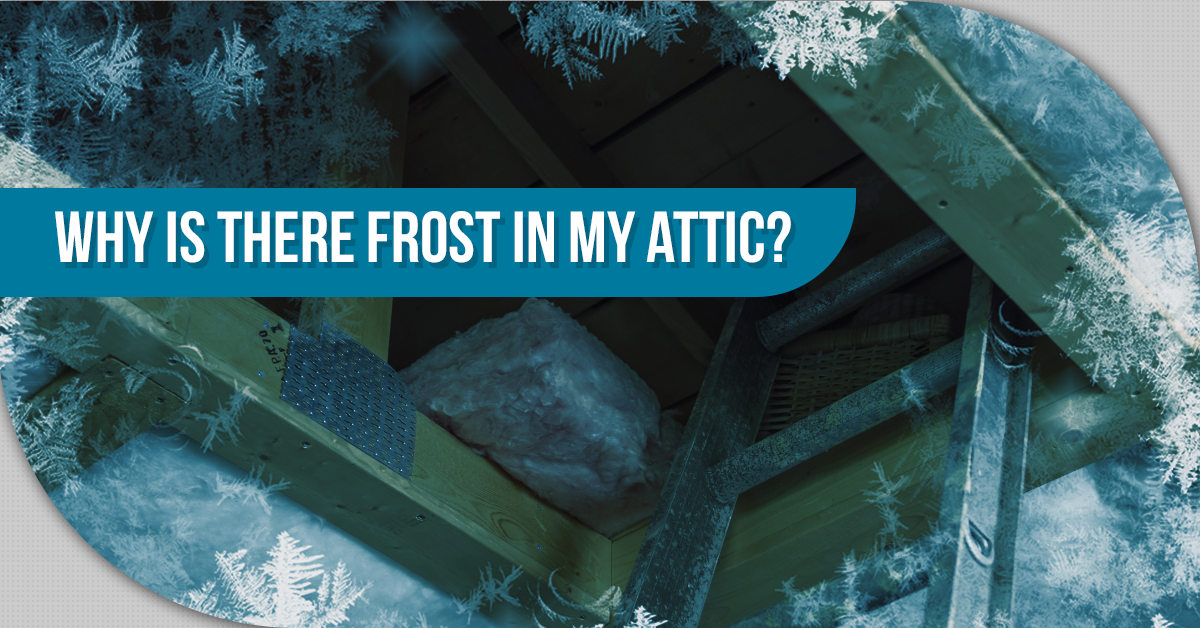Why Is There Frost In My Attic?
- Home
- Why Is There Frost In My Attic?
Why Is There Frost In My Attic?
 Have you ever walked into your attic only to see a layer of frost covering the ceiling? The purpose of an attic is to separate your indoor air from the air from your roof and to provide your home with ventilation. So, why does frost form in your attic? The most probable cause of this is that humid, warm air from throughout your home has leaked into the attic. On a cold day, water will begin to condense on the ceiling and turn into frost. Although the frost itself won’t do much damage, the issue comes when the weather outside warms up and the frost begins to melt. This can lead to your roof sheathing deteriorating, mold, ruined insulation, water stains, and warped wood. Keep reading to learn more about frost in your attic and how to prevent it.
Have you ever walked into your attic only to see a layer of frost covering the ceiling? The purpose of an attic is to separate your indoor air from the air from your roof and to provide your home with ventilation. So, why does frost form in your attic? The most probable cause of this is that humid, warm air from throughout your home has leaked into the attic. On a cold day, water will begin to condense on the ceiling and turn into frost. Although the frost itself won’t do much damage, the issue comes when the weather outside warms up and the frost begins to melt. This can lead to your roof sheathing deteriorating, mold, ruined insulation, water stains, and warped wood. Keep reading to learn more about frost in your attic and how to prevent it.
Where does it come from?
Frost starts to form in your attic due to air leaks and attic bypasses. If you go into your attic one day to find that it smells musty and mold is forming, this probably started with frost formation on a cold day. Just like the rest of your home, your attic needs to be well ventilated. You need to make sure that there are enough exhaust fans going directly out of the attic and not just directed at a roof vent. This won’t do enough to keep warm, moist air out of your attic.
Another thing you need to worry about is air leaks in your attic floor. Although small crevices and leaks may seem like they’re not a problem, on cold days, a lot of moisture will make it up into your attic, especially if you have your heater on. When you go about sealing these leaks, make sure you don’t just get the big ones. It’s better to be safe than sorry.
Attic air sealing
Even if you aren’t experiencing frost forming in your attic, it’s a good idea to seal your attic. When you do so, less air is escaping from your home, meaning you’ll be saving money on your energy bills by containing your heating and cooling within the part of your home that you actually inhabit. Think of it like replacing or repairing old windows. You wouldn’t live with leaky or cracked windows in your home, so why would you tolerate air leaks in your attic? Attic air sealing can be broken down into four steps:
- Checking your attic to locate any leaks
- Patching holes
- Sealing small cracks or holes
- Putting weather stripping on the access door
For more details on the attic air sealing process, read part two of this blog series.
Contact Safe Investment Home Inspections
Attic frost poses not only a huge issue for your home itself but for your safety. Water damage can lead to dangerous mold growth and ruin the structural integrity of your home. If you’re concerned about water damage in your home, contact Safe Investment Home Inspections for a full-home inspection.



